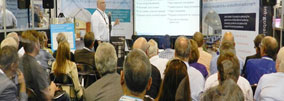Assumptions and Calculations
Our Wall Wrap Selector assesses likely moisture levels in your home’s walls & recommends the best insulation and wall wrap to minimise the risk. Please refer to the information below for the calculations and assumptions for our Wall Wrap Selector.
General
- External temperature and humidity sourced from the National House Energy Rating Scheme
- External temperature and humidity conditions are calculated in accordance with BS5250 using mean monthly data with a 1-in-5 year risk factor
- Internal temperature and air humidity is based on the assumed occupancy levels in accordance with ISO 13788 Annex A part A.1
- Thermal performance of products and air gaps are based on ISO 6946
- Calculations assume good practice air control measures
- Performance of membranes are based on sealed membrane laps and end joints
- Vapour permeability is based on product testing where available or BS5250 generic products where no data exists
- This calculation is limited to the specified building element listed in the report
- Software used for predictions is JPA Designer
Material and Product Properties
For the calculations, design values in accordance with BS5250 have been used for all structural, cladding and lining elements. Design values for membrane products have been used.
External boundary conditions
Unless otherwise specified, the external conditions used shall be representative of the location of the building, taking account of altitude where appropriate. Temperature and Humidity conditions were taken from the national House Energy Rating Scheme weather Data.
Internal boundary conditions
Values were selected according to the expected use of the building in accordance with ISO 13788 Annex A part A.1 ‘Continental’ and tropical climates. Annex A gives a method for estimating internal air temperature and humidity from the external temperature.
The internal temperature and air humidity level was calculated using a normal occupancy level of the building in accordance with Annex A part A.1
Limitation of sources of error
There are several sources of error caused by the simplifications within the calculation of interstitial condensation in ISO 13788
- The thermal conductivity depends upon the moisture content, and heat is released/absorbed by condensation/evaporation. This will change the temperature distribution and saturation values and affect the amount of condensation/drying.
- The use of constant material properties is an approximation.
- Capillary suction and liquid moisture transfer occur in many materials and this may change the moisture distribution.
- Air movements within building materials, gaps, joints or air spaces may change the moisture distribution by moisture convection. Rain or melting snow may also affect the moisture conditions.
- The real boundary conditions are not constant over a month.
- Most materials are at least to some extent hygroscopic and can absorb water vapour.
- One-dimensional moisture transfer is assumed.
- The effects of solar and long-wave radiation are neglected except for roofs.
- No consideration is given to condensation forming due to cold bridging
NOTE:
- Due to the many sources of error, this calculation method is less suitable for certain building components and climates. Neglecting moisture transfer in the liquid phase normally results in an overestimate of the risk of interstitial condensation.
- The standard is not intended to be used for building elements where there is air flow through or within the element or where rain water is absorbed.
Risk Rating Range
Predicted maximum monthly accumulated condensation build-up:
- LOW 0-30 g/m2
- MEDIUM 30-50 g/m2
- HIGH 50-250 g/m2
- VERY HIGH >250 g/m2
JPA Occupancy Rating Usage
Class 1: normal
Class 2 – 9: high



